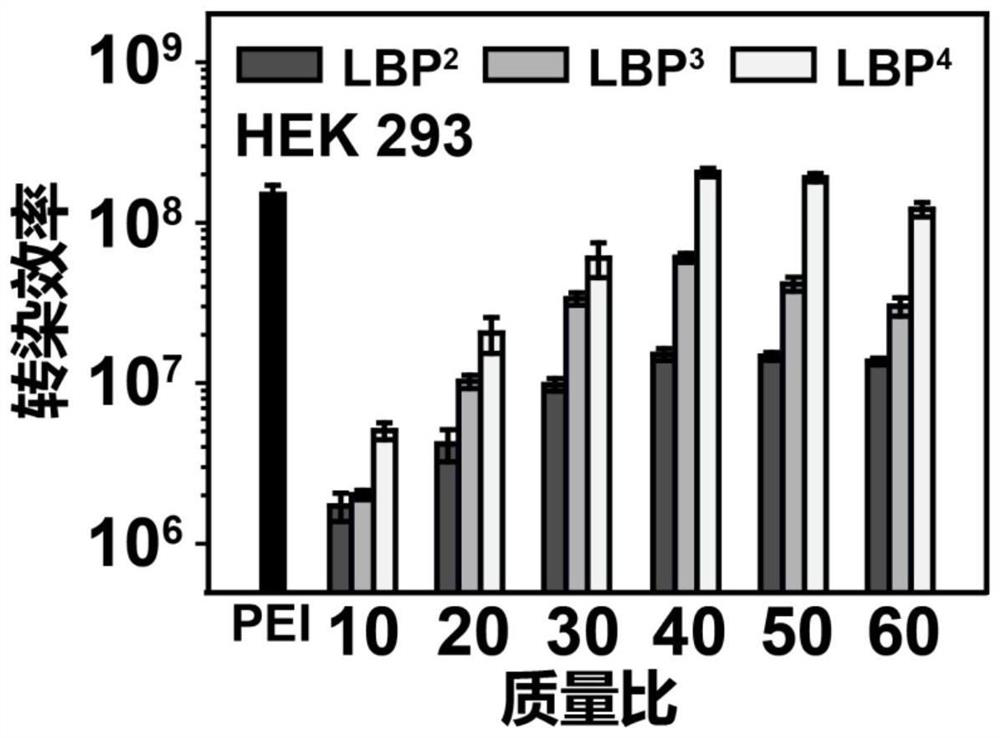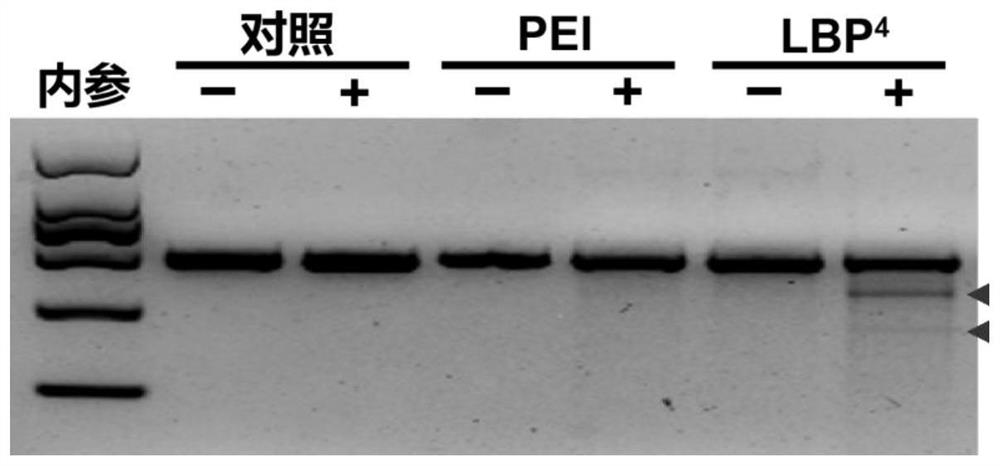A kind of liver-targeted cationic gene carrier constructed by amino-epoxy ring-opening reaction based on lactose and preparation method thereof
An epoxy ring-opening, gene carrier technology, applied in other methods of inserting foreign genetic materials, recombinant DNA technology, etc., can solve the problems of high toxicity and low effective toxicity, and achieve the effect of gene transfection and broad application prospects.
- Summary
- Abstract
- Description
- Claims
- Application Information
AI Technical Summary
Problems solved by technology
Method used
Image
Examples
Embodiment 1
[0029] Put 513 mg of β-lactose into a 50 mL round-bottomed flask, add 5 mL of anhydrous dimethyl sulfoxide to dissolve it completely, and continuously exhaust with nitrogen for 15 min, then seal it for later use. Subsequently, 500 mg of carbonyldiimidazole was dissolved in 5 mL of anhydrous dimethyl sulfoxide, and the dissolved liquid was drawn with a syringe, and slowly poured into the previously prepared β-lactose solution. After the injection, the mixed solution was allowed to react at room temperature for 24 hours. After 24 hours of reaction, 4 g of cystamine was dissolved in 3 mL of anhydrous dimethyl sulfoxide, and it was slowly injected into the reaction solution with a syringe, and the reaction was carried out at room temperature for 24 hours. After the reaction was completed, the reaction was added dropwise to 100-200 mL of acetone for precipitation, and after repeated washing and centrifugation, a white powdery solid lactosamine was obtained after vacuum drying.
Embodiment 2
[0031]349 mg of lactose amino acid and 100 mg of triglycidyl isocyanurate were put into a 50 mL round-bottomed flask, 10 mL of dimethyl sulfoxide was added to fully dissolve, and the solution was exhausted with nitrogen gas for 15 min, and reacted at 50 °C for 24 h. After the reaction was completed, 0.2 mL of ethylenediamine was added, and the temperature was raised to 60 °C for 2 h. Finally, the reaction solution was added to 50 mL of water, and then dialyzed with a dialysis bag with a molecular weight cutoff of 3500 for 24 hours. Finally, a white flocculent polymer was obtained after freeze-drying, which was denoted as LBP. 2 Polymer (LBP 2 ) number average molecular weight (M n ) is 17500, the molecular weight distribution index (M w / M n ) is 1.85.
Embodiment 3
[0033] 438 mg of lactose amino acid and 150 mg of triglycidyl isocyanurate were placed in a 50 mL round-bottomed flask, 10 mL of dimethyl sulfoxide was added to fully dissolve, and the mixture was exhausted with nitrogen gas for 15 min, and reacted at 50 °C for 24 h. After the reaction was completed, 0.2 mL of ethylenediamine was added, and the temperature was raised to 60 °C for 2 h. Finally, the reaction solution was added to 50 mL of water, and then dialyzed with a dialysis bag with a molecular weight cut-off of 3500 for 24 hours. Finally, after freeze-drying, a white flocculent polymer LBP was obtained. 3 . Polymer (LBP 3 ) number average molecular weight (M n ) is 19600, the molecular weight distribution index (M w / M n ) is 1.91.
PUM
| Property | Measurement | Unit |
|---|---|---|
| molecular weight distribution | aaaaa | aaaaa |
| molecular weight distribution | aaaaa | aaaaa |
| molecular weight distribution | aaaaa | aaaaa |
Abstract
Description
Claims
Application Information
 Login to View More
Login to View More - R&D
- Intellectual Property
- Life Sciences
- Materials
- Tech Scout
- Unparalleled Data Quality
- Higher Quality Content
- 60% Fewer Hallucinations
Browse by: Latest US Patents, China's latest patents, Technical Efficacy Thesaurus, Application Domain, Technology Topic, Popular Technical Reports.
© 2025 PatSnap. All rights reserved.Legal|Privacy policy|Modern Slavery Act Transparency Statement|Sitemap|About US| Contact US: help@patsnap.com



